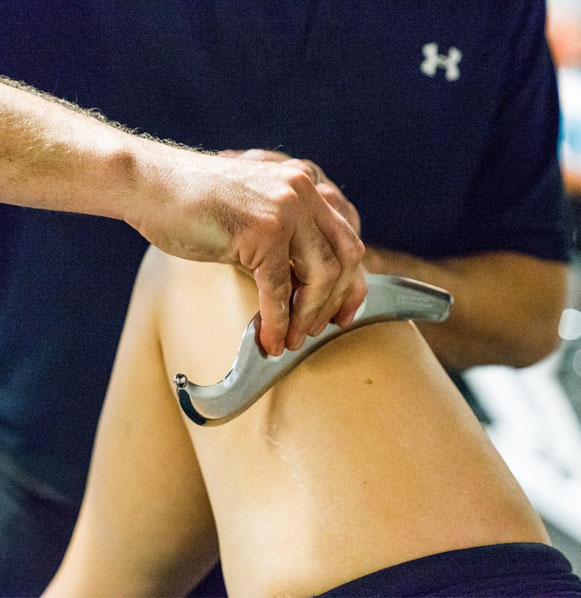The Accelerated Sports Physical Therapy team of licensed physical therapists combines our knowledge, evidence based practice and cutting edge state of the art technology to help you recover from your injury. The items blow may be utilized during your treatment sessions.
BLOOD FLOW RESTRICTION THERAPY
Blood Flow Restriction Therapy (BFR) is a -game changer in the world of rehab, sports training and general fitness. BFR is is the application of a pneumatic cuff (tourniquet) applied to the upper or lower limb, utilized during exercise to provide optimal outcomes. The cuff is then inflated to a specific pressure to obtain partial arterial and complete venous occlusion. The application is brief and intermittent, about 6 minutes per exercise and up to 30 minutes based on protocol.
After surgery, a patient is usually unable to loft loads known to induce skeletal muscle adaptation. BFR allows the provider to begin the strength and hypertrophy phases of rehabilitation earlier.Research demonstrates improved patient outcomes after:
- ACL reconstruction surgeries
- Women with knee osteoarthritis
- Total joint arthroplasties
- Achilles repair
- Fractures
- Rotator cuff repairs
- Cartilage repairs
- Tendinopathies
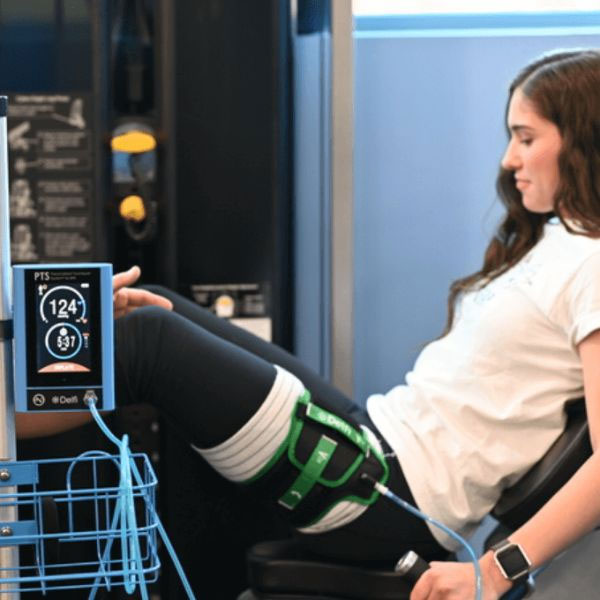
CRYO/THERMO THERAPY
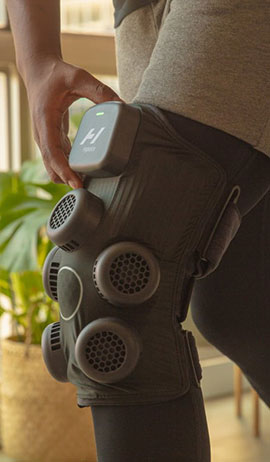
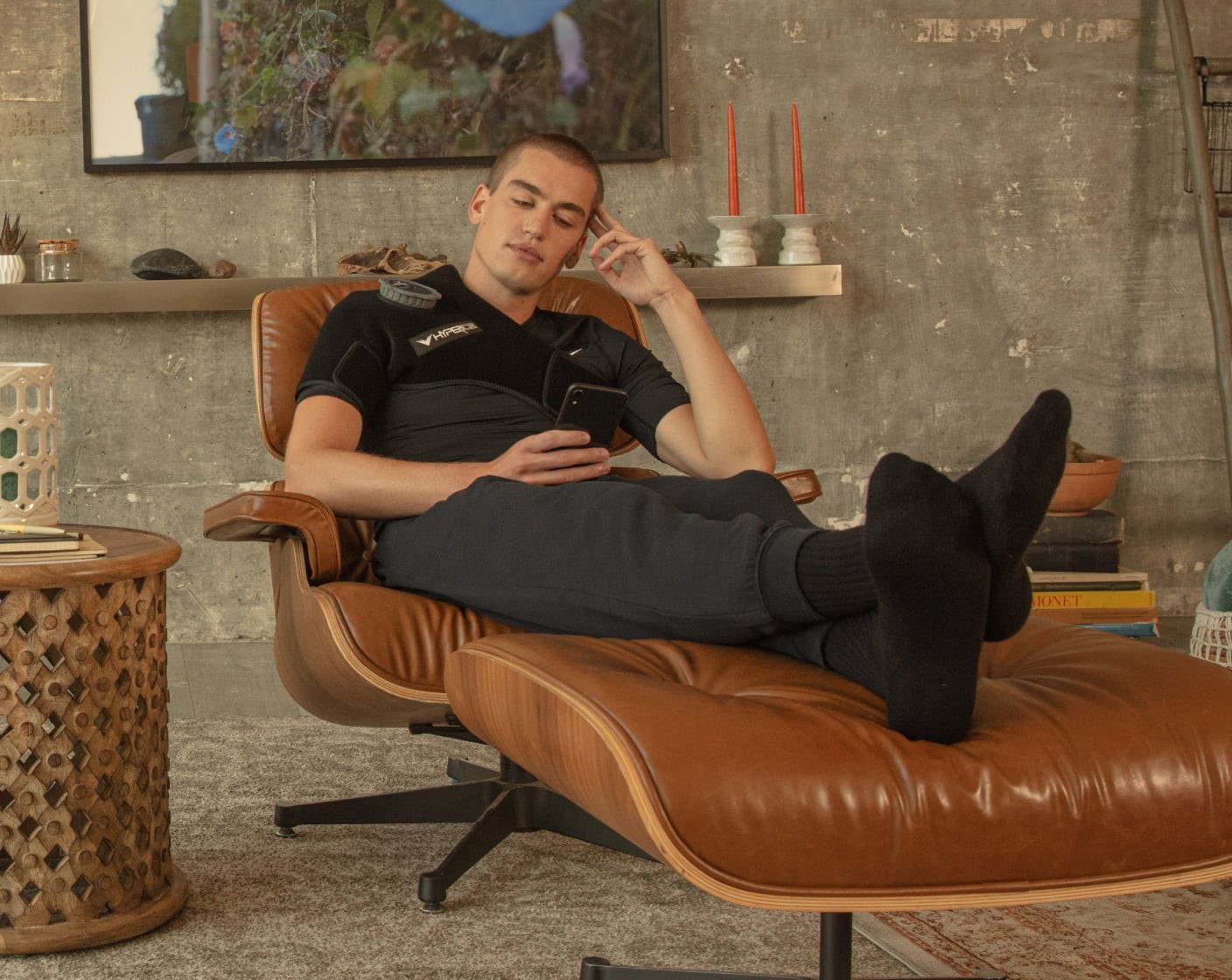
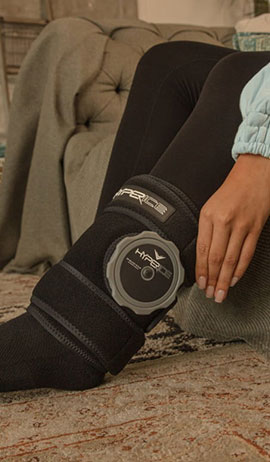
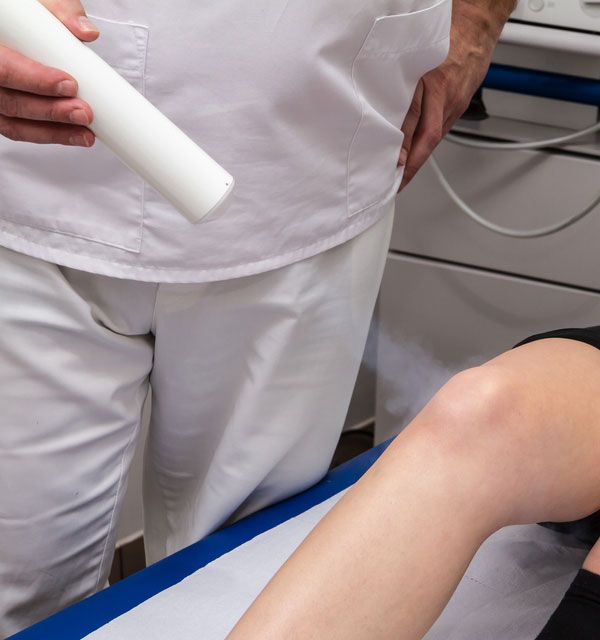
The application of cold (cryotherapy) or heat (thermotherapy) to an injury is a traditional modality to treat muscle related pain and sports injuries. Cyrotherapy should be used immediately after injury, whereas thermotherapy should be used when inflammation has been reduced.
Cyrotherapy
- Reduces blood flow to injured area to prevent bleeding and swelling
- Helps alleviate pain of delayed onset muscle soreness (DOMS) 24-48 hours after exercise
- Provides pain relief
- Used as soon as possible after injury (acute phase)
- Not used before or during sport
Thermotherapy
- Increases circulation, bringing more blood flow to the area providing nutrients and gives muscles more energy
- Warms connective tissue, allowing them to stretch and move easier to prevent injury
- Provides pain relief
- Used as part of the pre-game warm-up
- NOT used in an acute injury or where there may be inflammation
CUPPING THERAPY
Cupping is an alternative form of medicine, where a therapist places cups on your skin for a few minutes to create suction. The suction force pulls the skin upwards and breaking ope tiny blood vessels (capillaries) under the skin. The body treats the cupping area like and injury and sends more blood to the areas to stimulate natural healing process.
The cupping may cause round bruise like marks, which typically fade in 1-2 weeks. Cupping assists in:
- Pain reduction
- Increasing blood flow
- Relaxation
- Reducing Inflammation
- Type of deep tissue massage
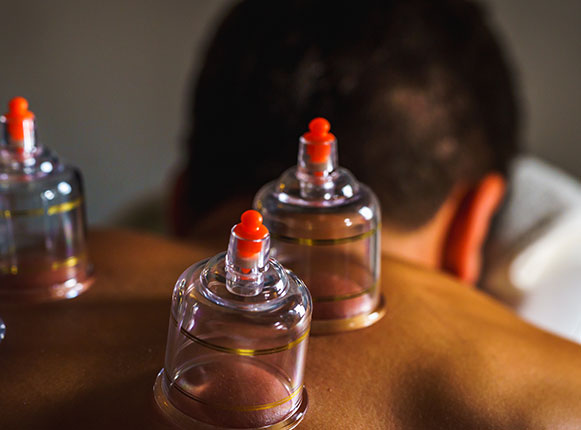
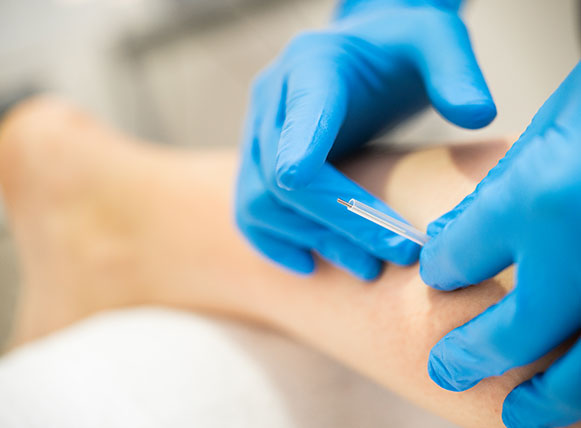
DRY NEEDLING
Dry needling is a modern, safe, efficient and effective treatment designed to ease muscular pain. The clinician inserts a dry filiform needle into a trigger point in your muscle or tissue to produce an involuntary spinal cord reflex or a local twitch response. These points are areas of knotted or hard muscles. Deactivation of the trigger points can help to relieve the knot, pain and muscle spasms. The trigger points may improve flexibility and increase range of motion. This method is often utilized to treat sports injuries, muscle pain and even fibromyalgia.
Indication:
- Identification of myofascial trigger points in the muscle through palpation
- Clinical Presentation
- Subject recognition of pain with palpation
- Spot tenderness
Contraindications:
Dry Needling should be avoided in patients under the following circumstances
- Patients with needle phobia
- Patient unwilling – fear, patient belief
- Unable to give consent
- Limb with lymphedema
- < 3 months post surgery
- Diabetes
- Peripheral Neuropathy
- Blood/Bleeding Disorder
- Pregnancy
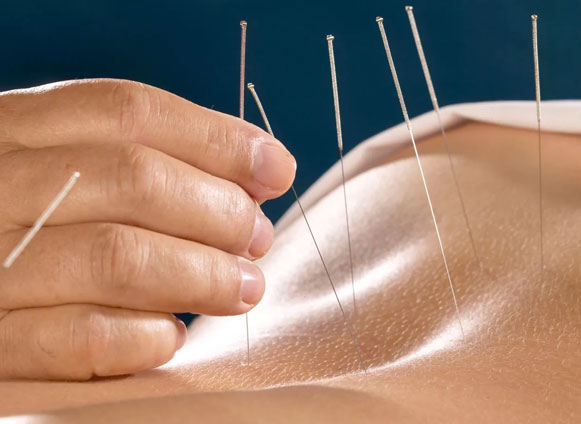
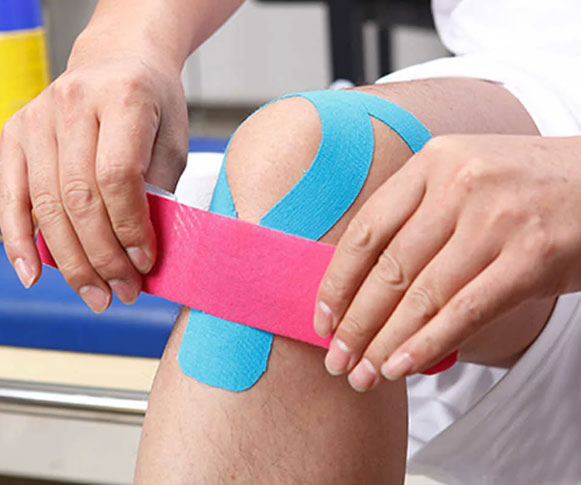
KINESIOLOGY TAPING
Kinesiology taping is a therapeutic method utilized as a temporary technique for the prevention and treatment of sport injuries. Taping has multiple benefits, including :
- Relieve pain
- Reduced muscle fatigue
- Improve joint stability
- Enhance athlete confidence
- Reduce strain
- Correct biomechanics
- Inhibit muscle action
- Facilitate muscle action
- Enhance proprioception
- Compression to reduce swelling
ELECTICAL STIMULATION
Electrical stimulation is a physical therapy modality used to accomplish various tasks. It can decrease pain or spasms, strengthen muscles, block pain signals and improve blood circulation. The provider will apply the electrodes (pads) to the part of the body that needs treatment. The electrodes are connected to a machine via a wire. The treatment is typically passive (except for NMES when an exercise happens simultaneously with stimulation) and the patient will feel a slight tingling sensation that is strong but comfortable.
Types of Electrical Stimulation:
- Trancutaneous Electrical Neuromuscular Stimulation (TENS)
Used to manage short and long term pain
- Neuromusclar Electrical Stimulation (NMES)
Used to cause a single muscle or group of muscles to contract to improve the way the muscle contracts. Typically a patient will perform an exercise during this treatment. While increasing the muscle function, the contraction will also promote blood flow to the area to help an injury heal.
- Interferential Current (IFC)
Used to decrease pain, relieve muscle spasms, or improve blood flow.
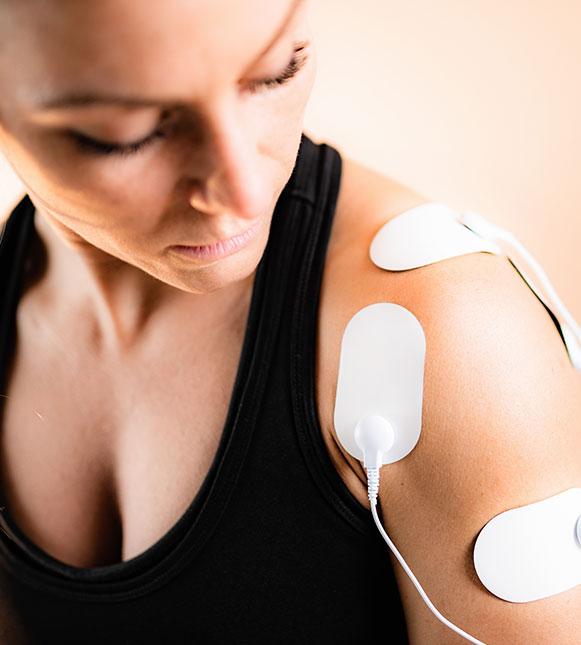
PERCUSSIVE/VIBRATION THERAPY


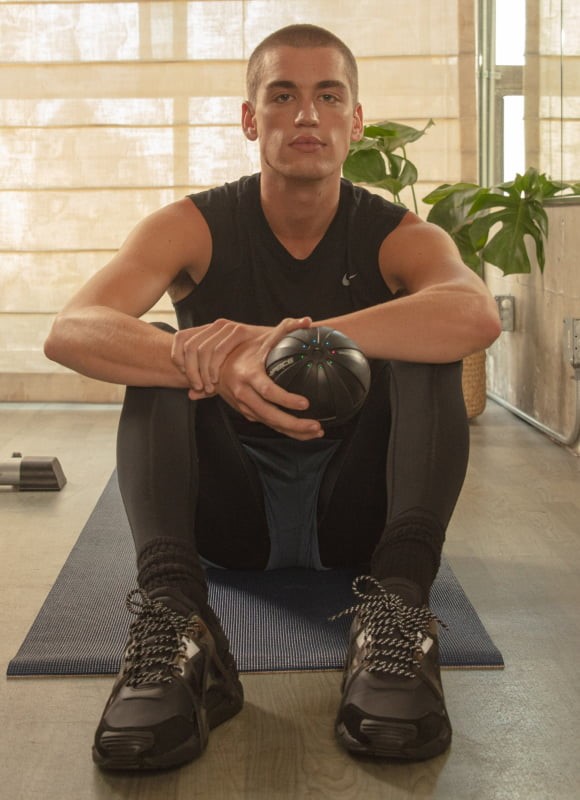
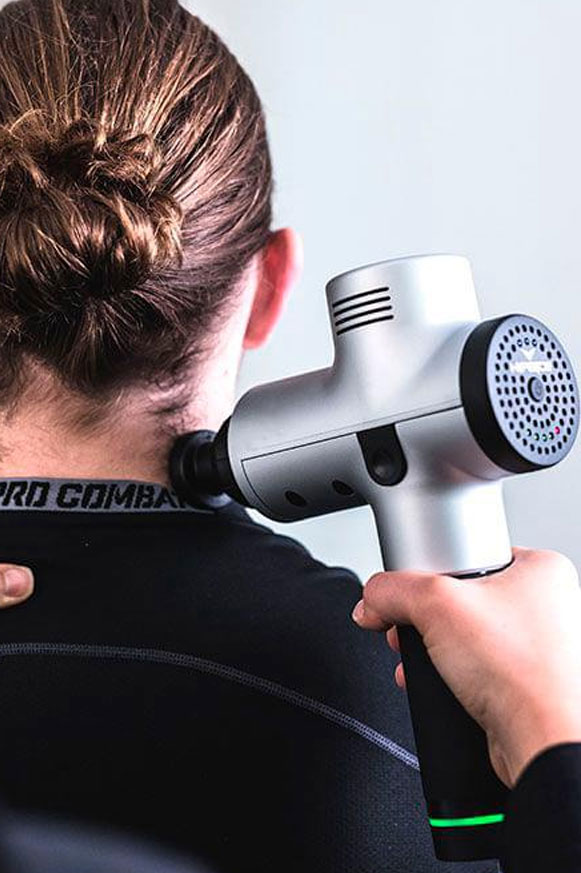
Percussive Therapy
Percussive therapy via a Hypervolt massage gun is extremely effective for recovery and part of your warm up. Applying a massage gun to your muscles then stretching them can increase the range of motion. Percussive therapy has a frequency of 22-40 hertz pounding the area 22—40 times per second. This stimulates the nervous system and generates heat, which increases the blood flow and increase the range of motion.
Vibration Therapy
Vibration is a constant stimulus via Hyperice Hypersphere, or Vyper Foam Roll. The muscles become acclimatized to the stimulus quickly. The body accommodates to the stimulus and the nervous system turns off and numbs the area. Vibration therapy can assist in the following:
- Increase bone density
- Increase muscle mass
- Improve circulation
- Reduce joint pain
- Alleviate stress
PNEUMATIC COMPRESSION THERAPY
Intermittent pneumatic compression is a therapeutic technique used that includes an air pump and inflatable garments designed to improve venous circulation. When activated the pump fills the air chambers of the inflatable garment to pressurize the tissues in the limb, forcing fluids, such as blood and lymph, out of the pressurized area. When the pressure is reduced, blood flows back into the limb.
Hyperice NormaTec Compression Pants help to warm up quickly, recover faster, and feel fully revived. Customize each session with 7 intensity levels and give yourself a little extra attention wherever you need it most with ZoneBoost™. They are used post-surgery and post work out to aide in an accelerated recovery.
TOOL ASSISTED MASSAGE
Tool assisted soft tissue mobilization is a specialized myofascial release and massage technique. It involves use of a metal or plastic tool to improve soft tissue mobility. The ergonomically shaped tools help your physical therapist to massage and mobilize your muscles, fascia and tendons to reduce pain and improve movement.
The physical therapist will rub the ergonomically shaped tool onto your skin, exploring the area around your injury. The skin being treated may turn red and sometimes bruise. It is common after a session, a patient will perform active range of motion or stretches to improve mobility to keep the scar tissue or fascia restrictions from reforming.
Physical therapists may use tool assisted massage for some of the following impairments:
- Tendonitis
- Pain with motion
- Limited mobility or Loss of Range of Motion
- Myofascial pain
- Ligament Sprains
- Plantar Fasciitis
- Scar tissue from surgery or trauma
